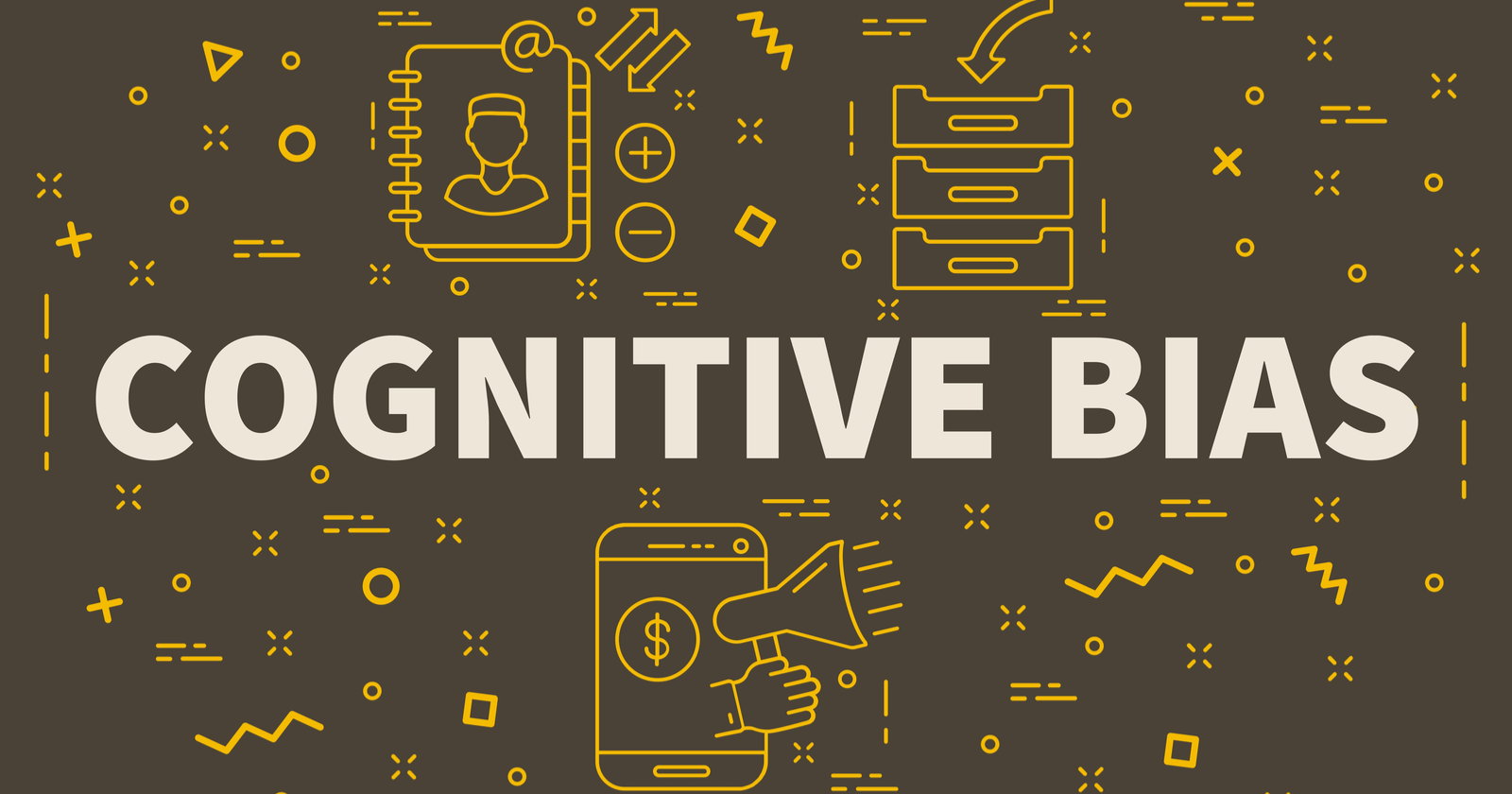Cognitive biases are irrationalities in the human psychology that cause us to make decisions which are more emotional or heuristic than a perfectly rational mind would make.
They are present in everybody and should not be thought of as signs of stupidity or as something you are above having.
People who are successful with their outreach and link building efforts tend to understand these cognitive biases on some level, whether explicitly or intuitively.
Today we’ll address 21 of these cognitive biases, and how they affect your outreach.
1. Empathy Gap
Arguably, this is the most important one to come to grips with, within yourself, in order for these approaches to work successfully.
The empathy gap is the tendency to underestimate, how important emotions are to the decision-making process, both in ourselves and in others.
Be aware that emotions make up at least half of the decision-making process, and adjust your approach appropriately, rather than relying on pure rational cost-benefit analysis to make your outreach effective.
2. Framing Effect
People tend to come to different conclusions based on the same data, depending on how that data is contextualized.
In your outreach, context is everything. Always give a clear, true, and believable reason why you are contacting your recipient specifically.
I’ve found that somehow people new to outreach tend to think their context needs to be deceptive. In reality, simply telling them precisely what specific thing prompted you to contact them is enough.
You don’t need to convince them you are their biggest fan and have been following their blog for decades.
3. Backfire Effect
When people’s beliefs are challenged by contradictory evidence, most people paradoxically hold to their original belief with even more conviction.
In the context of outreach, this means efforts to “challenge” their initial belief that you are spamming them will probably just increase their conviction that, you are a spammer!
This is why the outreach that attempts to overload the recipient with credentials tends to be less effective than a simple email with some context for the reason you are contacting them.
4. Choice Supportive Bias
People evaluate their own previous choices as being better than average.
I’m not arguing that you should “trick” your recipients into making choices that benefit you because they will be “tricked” into thinking it was a good decision.
Instead, I’m arguing that if you can get small commitments from people, they will be more likely to continue working with you on bigger or more demanding projects (which should still be mutually beneficial).
5. ‘Curse of Knowledge’
Better-informed people tend to forget what it was like to be lesser-informed. This is primarily a bias to watch for, in yourself.
Remember that most people you contact are not informed about SEO, many may not be informed about inbound marketing, and most won’t be interested in being lectured on these subjects either.
Check yourself for this bias and approach them in ways that address things they are more likely to be interested in or willing to at least hear about.
10. Endowment Effect
People ask for much more in order to give something up than they would be willing to spend to obtain it.
In your outreach, put yourself in the position of the recipient and think of linking to you as “giving something up.”
Recognize that they will demand for more from you in order to link to you than they would probably be willing to do in order to obtain a link.
11. Attention Bias
This bias skews people’s perception of what is happening by causing them to focus their attention on things related to what they are already thinking about.
You can’t control what people are thinking about, but you can keep your messaging focused, so that there isn’t one small thing to take out of context and amplify with speculation.
12. Confirmation Bias
Related to attentional bias, confirmation bias makes us search for, interpret, focus on, and remember things that confirm our preconceptions, while avoiding things that challenge them.
Primarily, this is a reminder to work with people’s predilections, and not against them (unless provoking a hostile reaction is what you are looking for, not something I would advise).
13. Belief Bias
People will reject conclusions that seem unrealistic, even if the logic behind them is fool-proof.
Never make an offer that seems too good to be true in your email, even if you plan to follow through on it, because people will most likely assume it’s a scam.
14. Bandwagon Effect
People are more likely to choose an option if they have a reason to believe that others are doing so as well. This is why it can be useful to link to previous examples of collaborations with other influencers in your outreach.
15. Anchoring
People tend to make decisions based only on the most conspicuous information, as well as the first piece of information they come across, failing to factor in all of the other variables.
Limit the amount of time you devote to tangential variables in your outreach. Address only the most conspicuous concerns, such as why somebody they don’t know is contacting them.
16. Decoy Effect
If you start with two options that both have their pros and cons, then introduce a third option that is clearly inferior to one of the other options, people become much more likely to choose the option that the “decoy” is clearly inferior to.
In your outreach, you can use a modified “decoy” in the form of a more demanding project that makes a smaller commitment look much less demanding. (The third option we’re trying to avoid here is not responding to the email at all.)
However, I would advise against using a true decoy, that offers only negatives. Your “decoy” should still be something mutually beneficial that you would like to follow up on.
17. Default Effect
Related to the decoy effect, people tend to choose the option that most likely seems the default option.
In your outreach, if you don’t supply a default option, and leave things too open-ended, the default option here becomes, not responding to your email.
18. ‘Ben Franklin’ Effect
People are paradoxically more likely to do a favor for somebody that they’ve already done a favor for than somebody who has done a favor to them. (Note that they are still more likely to do a favor to somebody who has done them a favor, if there are no preexisting favors.)
This is another reason why it’s a good idea to focus on getting very small commitments from people rather than big ones, since big projects are much more likely to happen after small ones.
Note that this effect isn’t an excuse to be self-serving in your outreach.
19. Forer Effect
People tend to assign high accuracy ratings to descriptions of their personality (as long as they aren’t negative), even if those descriptions actually weren’t personalized to them at all.
I’m not arguing that you should pull some astrology text and paste it into your outreach emails, but I am arguing that including even the most basic observations about their online personas can go a long way.
20. Hostile Attribution Bias
This bias isn’t always present, but most people have it under the right circumstances, and for most people, evaluating email from people you don’t know is one of those circumstances.
This bias simply means we tend to assume that an ambiguous action has a hostile intent behind it. This is why it’s important to demonstrate with your actions that the intent behind your outreach is benign and mutually beneficial.
21. Ambiguity Effect
This bias causes people to choose options with certain outcomes over options with uncertain outcomes.
To overcome this bias, be as clear as possible about why you are contacting your recipient, and specifically what to expect from the process.
Avoid walls of text to do this, however, since the ambiguity effect can also cause somebody to avoid spending a lot of time on something (such as reading) with no clear benefit of doing so.
22. Conjunction Fallacy
Closely related to the ambiguity effect, this bias makes us assume that a specific condition is more likely than a general one.
This means that giving specific examples doesn’t just affect their decisions; it affects how they perceive the likelihood of a positive outcome.
23. Base Rate Fallacy
People tend to ignore general statements and favor particular examples. This is why linking to specific examples of previous projects tends to get a better response rate.
24. Denomination Effect
People spend more money when it is divided into smaller increments, which is why payment plans are often more appealing than lump sums.
The same effect arguably applies to getting commitments in your emails. A series of small commitments can add up to a big project, but the sum total feels much smaller than agreeing to something the same size up front.
25. Hyperbolic Discounting
Most people’s decisions reflect a bias towards in-the-moment benefits and away from long-term benefits.
In your outreach, aim for commitments and projects that are worth taking part in for their own sake, rather than only on the possible future benefits.
Conclusion
Remember that most of these cognitive biases are virtually universal to human beings, at least under the right circumstances. They influence both how we embark in our outreach efforts and how recipients respond to them.
People’s decisions are heavily influenced by emotions and heuristics, and it’s important for us to approach our outreach in a way that speaks to these human impulses, rather than relying on pure cost-benefit analysis and blaming our recipients for failing to see the opportunities we are presenting them with.
More Link Building Resources:




